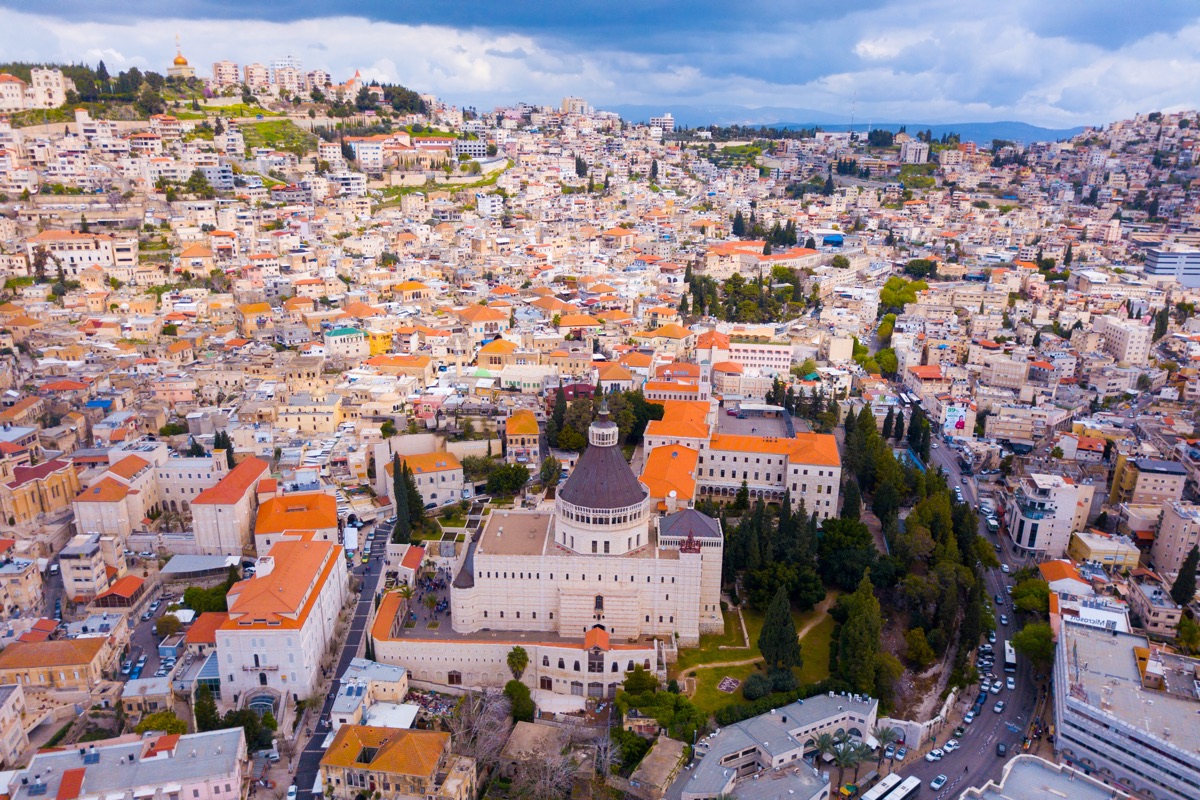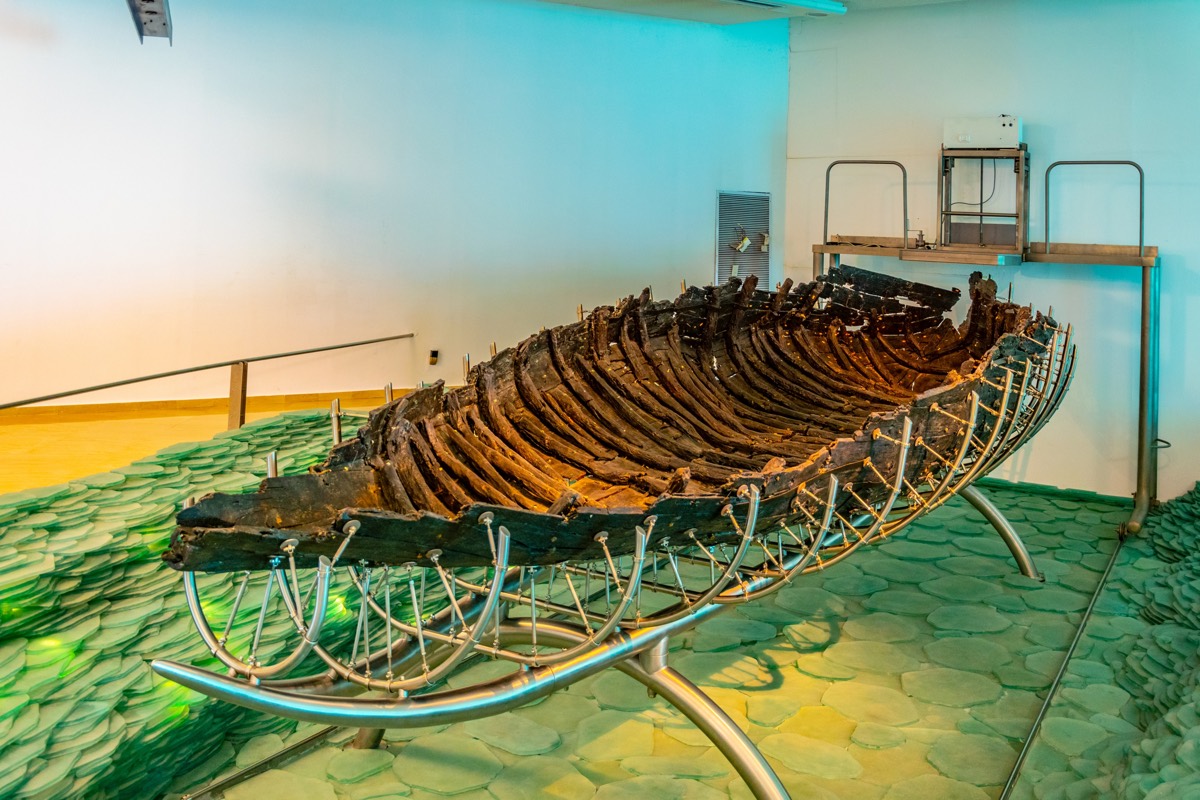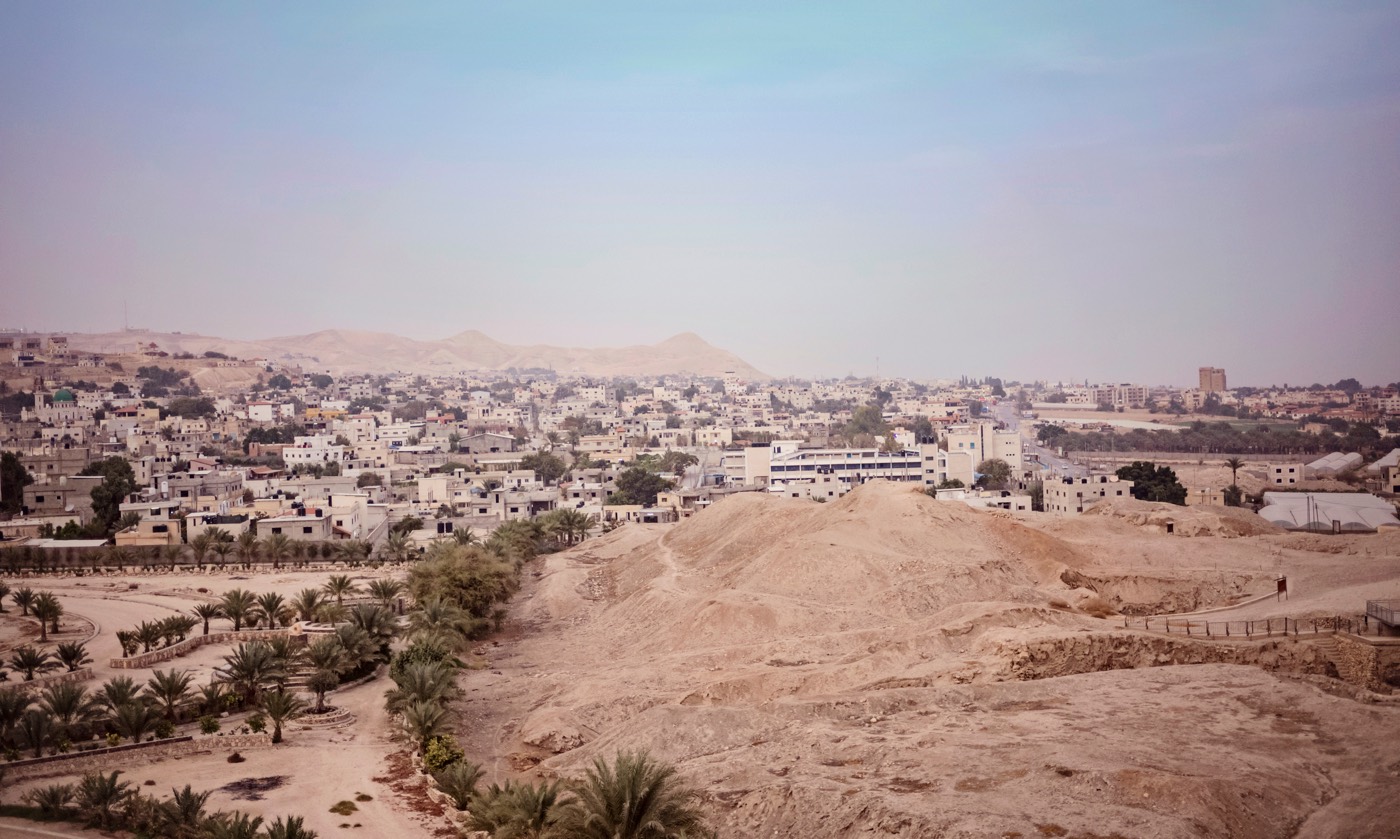8 Archaeological Sites That Jesus May have Visited
Jesus travels

The Gospels claim that Jesus visited numerous sites across modern-day Israel, Palestine, Egypt and Lebanon. But how can we tell which accounts are real versus legend? To find out, archaeologists have excavated areas at various religious sites. Their discoveries provide valuable information about what these sites were like in ancient times, and whether or not Jesus could have visited them. Here's a look at some of the more interesting places the historical Jesus may have set foot in, and what he was doing there.
Temple Mount

In Jesus' time, the Temple Mount was the location of the Second Temple, the holiest place in Judaism. According to the Gospel of Matthew, Jesus was furious when he saw money changers (people who exchange coins) and merchants working on the Temple Mount. He overturned their tables, declaring that they were turning a house of prayer into a den of robbers, the Gospel says.
In A.D. 70 during a Jewish revolt against the Roman Empire, the Roman Army destroyed the Second Temple. The Western Wall (sometimes called the Wailing Wall) is one of the most important parts of the Second Temple that still stands.
Today, the Temple Mount is a holy place for both Jews and Muslims (who call it Al-Haram ash-Sharif, which means "noble sanctuary" in Arabic), and is a source of conflict between the Israelis and Palestinians. Because of its religious importance and the ongoing conflict, little archaeological work has been done on the site; even so, excavations conducted nearby have revealed some interesting remains, such as a 3,000-year-old inscription engraved on pottery.
Nazareth

The Gospels say that although Jesus was born in Bethlehem, he spent much of his early life in Nazareth, in northern Israel. Recent archaeological research reveals that during the first century A.D., Nazareth was a Jewish settlement whose inhabitants appear to have rejected the spread of Roman culture.
Archaeological work has also revealed that centuries after Jesus' death, people began to venerate a house at Nazareth as the one that Jesus grew up in. The leaders of the Byzantine Empire (which controlled Nazareth up until the seventh century A.D.) had the house decorated with mosaics and built the Church of the Nutrition over the house to protect it.
A study of artifacts found within the house show that it was in use during the first century A.D., the time that Jesus lived. Whether it was really the house where Jesus grew up is unknown. Archaeologists have since found two other first century houses in Nazareth.
Get the world’s most fascinating discoveries delivered straight to your inbox.
Sea of Galilee

Several stories in the Gospels took place on or beside the Sea of Galilee (also called Yam [lake] Kinneret in Hebrew). The story of Jesus walking on water took place on that sea, and some of Jesus' disciples worked as fishermen there. Whether or not these stories are real is unknown.
Even so, numerous archaeological remains have been found around the Sea of Galilee, including an immense stone structure that weighs 60,000 tons and may be more than 4,000 years old. Found beneath the sea's surface, the cone-shaped structure is made of basalt cobbles and boulders, resembling other sites that mark burials.
The remains of a 2,000-year-old fishing boat was found deep in the mud along the Sea of Galilee in 1986. At 27 feet (8.2 meters) long and 7.5 feet (2.3 m) wide, the boat likely carried a crew of five people. Made of cedar planks built on an oak frame, the vessel provides a glimpse into how fishing was conducted at the time that Jesus lived; the artifact resides in the Yigal Allon Center in Kibbutz Ginosar.
Bethlehem

The Gospels claim that Jesus was born around A.D. 1 in the town of Bethlehem, located in what is now the West Bank. Excavations in Bethlehem and its environs reveal that the town has been inhabited for thousands of years. A necropolis reported in 2016 is scattered with tombs that date back more than 4,000 years. Bethlehem's fame as the site of Jesus' birthplace has made it an important place for Christian pilgrimages. The Church of the Nativity was constructed there during the sixth century and is now a UNESCO World Heritage Site.
Looters have destroyed many archaeological sites in Bethlehem due to a mix of factors, including poor economic conditions, a lack of resources for Palestine's antiquities service, demand from collectors of looted artifacts, and problems stemming from the ongoing Israel-Palestinian conflict, which has created an environment that encourages looting. A study published in the Journal of Mediterranean Archaeology, found that some looters in the Bethlehem area have even turned to spirit possession in hopes of finding gold artifacts.
Jericho

The Gospels describe how Jesus visited Jericho and performed a miracle by restoring a blind man's sight. Huge crowds followed him around the city; Jesus stayed at the house of a tax collector named Zacchaeus, who was so desperate to see Jesus that he climbed a tree to spot him over a crowd.
Archaeological excavations have shown that Jericho, also known as Tell es-Sultan and located on the West Bank, has been inhabited for over 10,000 years, making it one of the oldest towns on Earth. Although Jericho was destroyed several times, it has always been rebuilt and is still inhabited today.
King Herod, a king of Judea who ruled with the support of Rome, constructed three palaces near Jericho, where he lived during the winters. The palace he lived in changed over time. Archaeological excavations suggest that these palaces may have ceased being used after Herod's death in 4 B.C. However, Jericho continued to be inhabited through Roman times up to the present day.
Capernaum

Jesus reportedly spent some time in Capernaum, a town located near the Sea of Galilee, according to the Gospels. There, the Gospels say, he performed several miracles, including healing the paralyzed servant of a centurion (a Roman military officer).
Jesus also spent some time teaching in Capernaum's synagogue, the Gospels say. Archaeologists discovered Capernaum and excavated its synagogue several decades ago, finding that the synagogue had been rebuilt and modified during ancient times. Much of the synagogue dates to centuries after Jesus' life. However, the foundations of a first-century synagogue, where Jesus likely taught, were found beneath the remains of the more recent synagogue.
Archaeologists have also found homes in Capernaum that date back around 2,000 years, to the time that Jesus lived. One of the houses appears to have been venerated in ancient times as the home of Peter, one of Jesus' disciples. According to the Gospel of Matthew, Jesus visited this home and healed Peter's mother-in-law, who was suffering from a fever.
Pool of Bethesda

The Gospel of John says that when Jesus was in Jerusalem, he went to a pool called Bethesda, which people believed had healing powers. He talked to a man who had been an invalid for 38 years and wasn't able to get into the pool. When Jesus heard the man's story, he told him "Get up! Pick up your mat and walk," according to the Gospel. The story goes that the man did just that, his mobility having been restored by Jesus. So, according to the Gospel, while the pool didn't necessarily have the power to cure people, Jesus did have that power.
Archaeologists have excavated two pools that were venerated in ancient times as being the Pool of Bethesda. A fifth-century church had been constructed over them. Whether these pools were in use during the time of Jesus, and whether either of them is really the Pool of Bethesda, is unclear, but people who lived centuries after Jesus' time believed that they were.

Owen Jarus is a regular contributor to Live Science who writes about archaeology and humans' past. He has also written for The Independent (UK), The Canadian Press (CP) and The Associated Press (AP), among others. Owen has a bachelor of arts degree from the University of Toronto and a journalism degree from Ryerson University.


